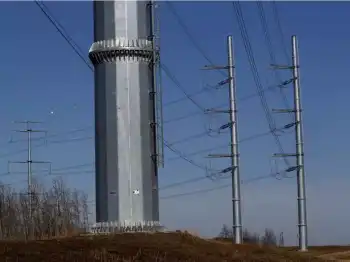CN moving more wood pellets for generation
"Since 2005, we have experienced a 16 per cent compounded annual growth in our wood pellet traffic, and we see growing potential for this business in domestic and international markets," said James Foote, executive vice-president, Sales and Marketing.
"Wood pellets are a renewable resource, right in our backyard," Foote added.
"Our network has direct access to wood pellet production areas and reaches key consumption markets in eastern Canada and the northeastern U.S., as well as key export terminals on the Pacific, Atlantic and Gulf coasts."
Major power plants and residential consumers in North America, Europe and Asia are turning to wood pellets as an alternative to fuel oil, gas or electricity to heat homes. In addition, wood pellets are being used increasingly in industrial applications such as district heating plants, greenhouses, and cement and aluminum production facilities.
Wood pellets, made from waste wood such as wood shavings and sawdust, are carbon neutral and do not contribute to global warming because they emit the lowest greenhouses gases of any fuel burned. The U.S. Environmental Protection Agency has endorsed wood pellet heat as one of the cleanest burning, most renewable energy sources on the planet.
Global wood pellet production in 2008 was almost 11 million tons, and some analysts believe worldwide production could double by 2014. North American consumption is expected to exceed 3.3 million tons in 2010.
Ontario Power Generation (OPG) — one of North America's largest producers of electricity — is studying conversion of some coal-fired generating units to agricultural and forest-based biomass. OPG is targeting 2012 for the first conversion — the Atikokan station in northwestern Ontario. CN serves the plant.
Canada's 29 wood pellet plants have a combined production capacity of approximately 2.2 million tons. Most producers are located in British Columbia, with some in Alberta and a few in Quebec. Facilities are also opening on CN lines in Wisconsin and Mississippi this year, and the first major Ontario producers are expected to start production in 2010.
CN's network reach and solid service are critical factors in the growth of a number of wood pellet producers:
• Granules LG, located in Saint-Felicien in Quebec's Lac Saint-Jean region, is building a rail connection into its plant, which will allow direct rail loading instead of trucking to a nearby reload facility. Direct access to CN will lower the producer's transportation costs and improve its competitiveness in the market.
• Pinnacle Pellet Inc. operates five plants in British Columbia, all located on CN's network. CN's network reach enables this producer to ship product for export via the ports of Prince Rupert and Vancouver, and to reach domestic markets across Canada, the U.S. Midwest and northeast.
Wood pellets are one of CN's expanding sustainable energy business segments, which include biodiesel, ethanol and wind turbine components. CN, as a railway, can help play a key role in addressing climate change challenge. Rail emits six times less greenhouse gases (GHG) than heavy trucks.
Plus, CN can move one tonne of freight 197 kilometres on just one litre of fuel. Using less fuel means fewer GHG emissions.
Rail also relieves traffic congestion, improves mobility in urban areas, and can ease pressure to renew road infrastructure by taking goods off highways.
Related News

Senate Committee Advised by WIRES Counsel That Electric Transmission Still Faces Barriers to Development
WASHINGTON - Today, in a high-visibility hearing on U.S. energy delivery infrastructure before the United States Senate Committee on Energy and Natural Resources, WIRES Executive Director and Former FERC Chairman Jim Hoecker addressed the challenges and opportunities that confront the modern high-voltage grid as the industry strives to upgrade and expand it to meet the demands of consumers and the economy.
In prepared testimony and responses to Senators' questions, Hoecker urged the Committee to support industry efforts to expand and upgrade the transmission network and to help regulators, especially the Federal Energy Regulatory Commission, promote certainty and predictability in energy policy…




